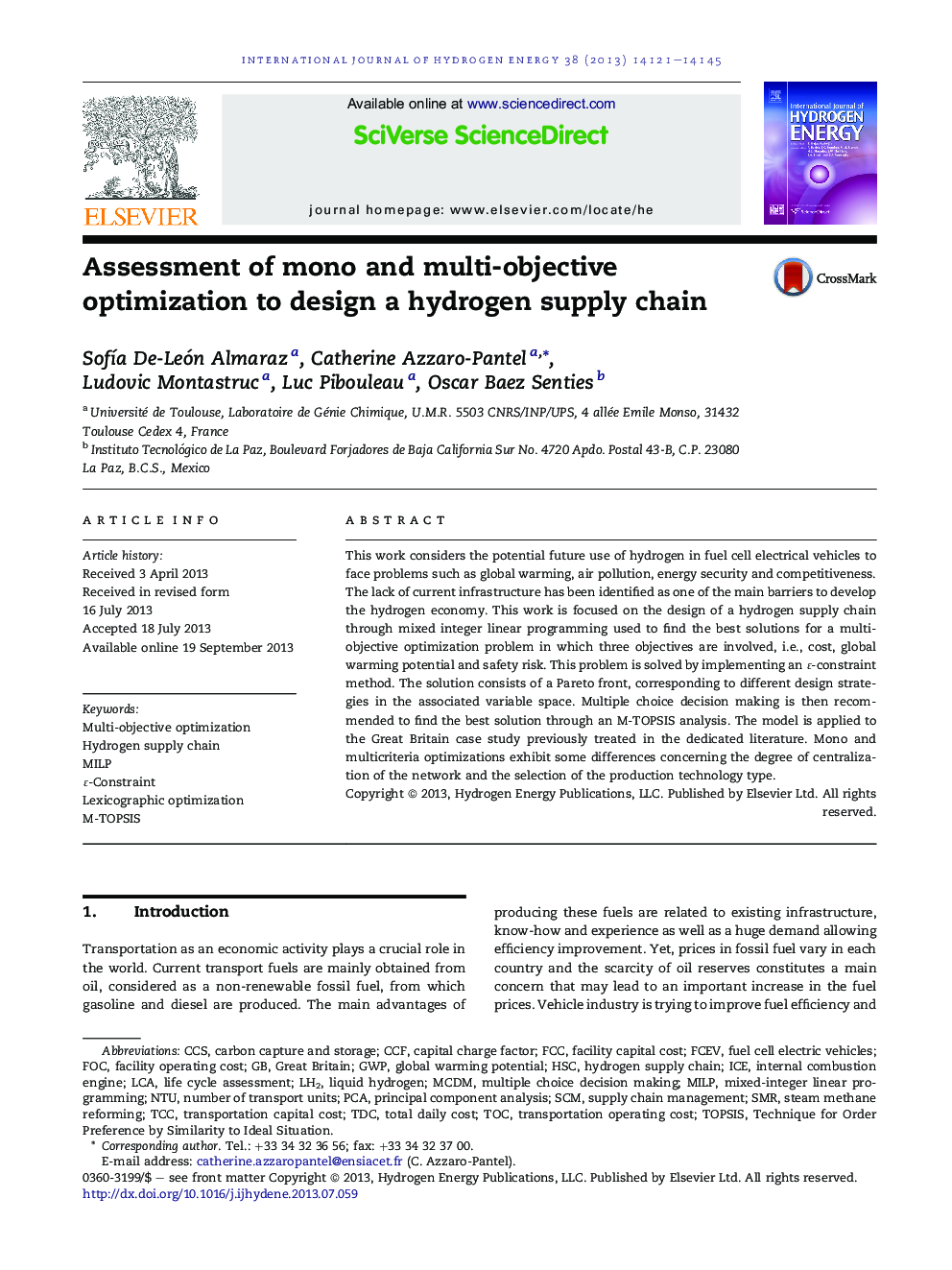| Article ID | Journal | Published Year | Pages | File Type |
|---|---|---|---|---|
| 1281373 | International Journal of Hydrogen Energy | 2013 | 25 Pages |
•We model the hydrogen supply chain through multi-objective optimization.•We examine three criteria: cost, environmental impact and safety risk.•Mono and multicriteria optimizations are compared.•The degree of the production decentralization is the main difference.•The selection of the production technology type varies among approaches.
This work considers the potential future use of hydrogen in fuel cell electrical vehicles to face problems such as global warming, air pollution, energy security and competitiveness. The lack of current infrastructure has been identified as one of the main barriers to develop the hydrogen economy. This work is focused on the design of a hydrogen supply chain through mixed integer linear programming used to find the best solutions for a multi-objective optimization problem in which three objectives are involved, i.e., cost, global warming potential and safety risk. This problem is solved by implementing an ɛ-constraint method. The solution consists of a Pareto front, corresponding to different design strategies in the associated variable space. Multiple choice decision making is then recommended to find the best solution through an M-TOPSIS analysis. The model is applied to the Great Britain case study previously treated in the dedicated literature. Mono and multicriteria optimizations exhibit some differences concerning the degree of centralization of the network and the selection of the production technology type.
